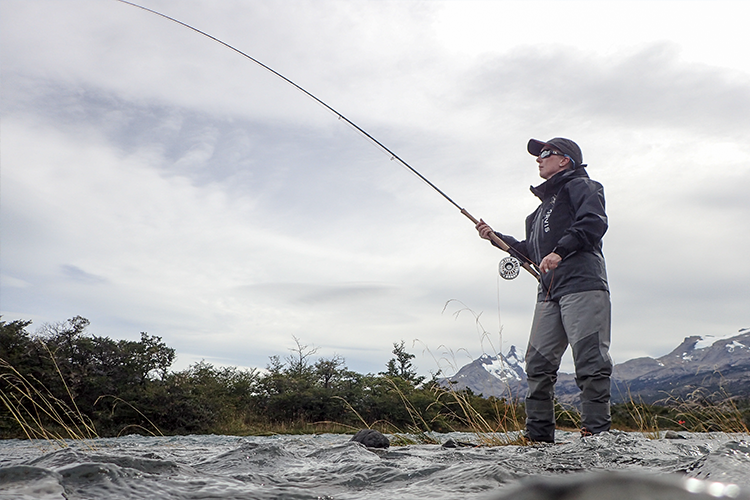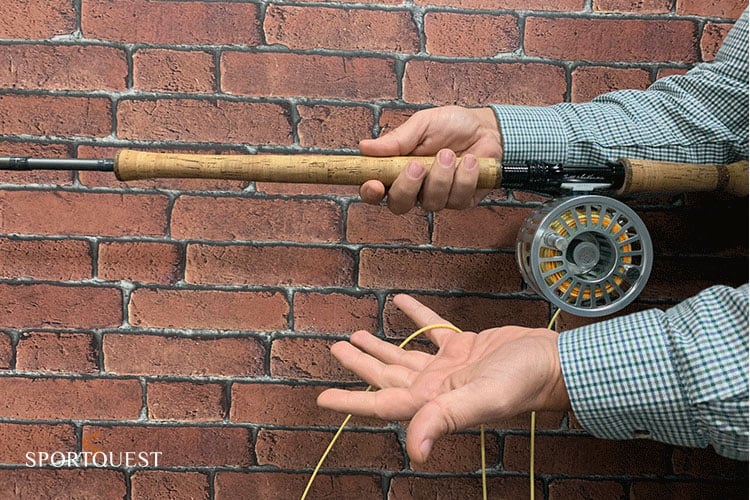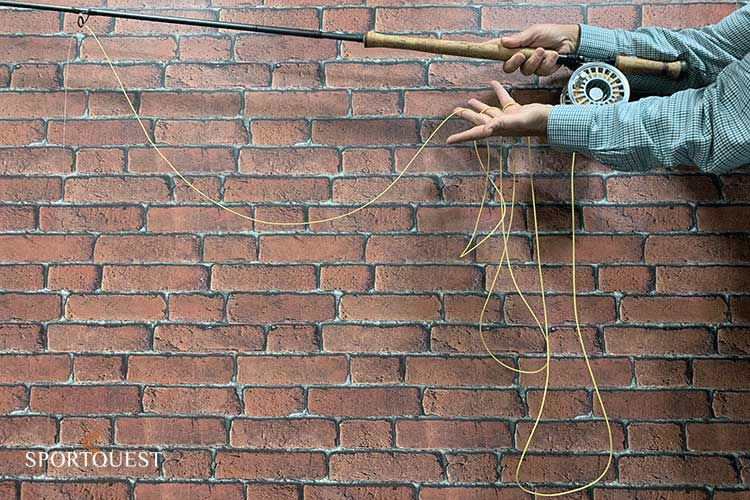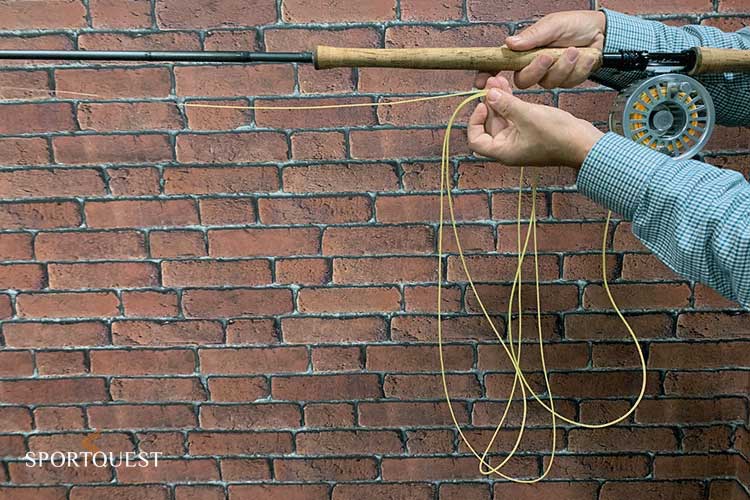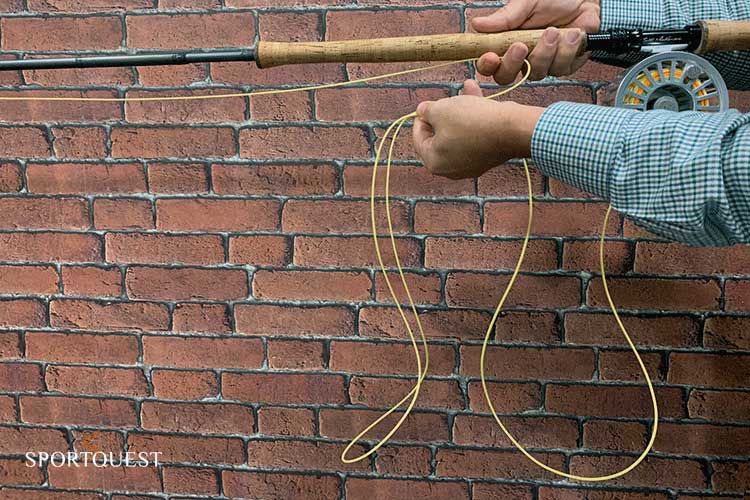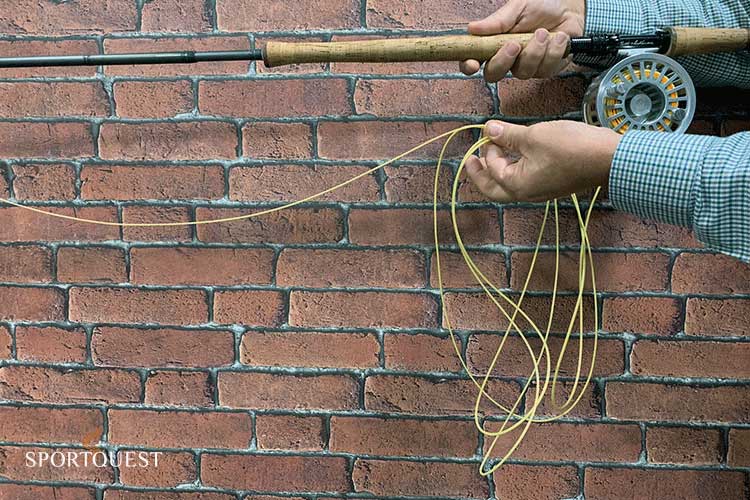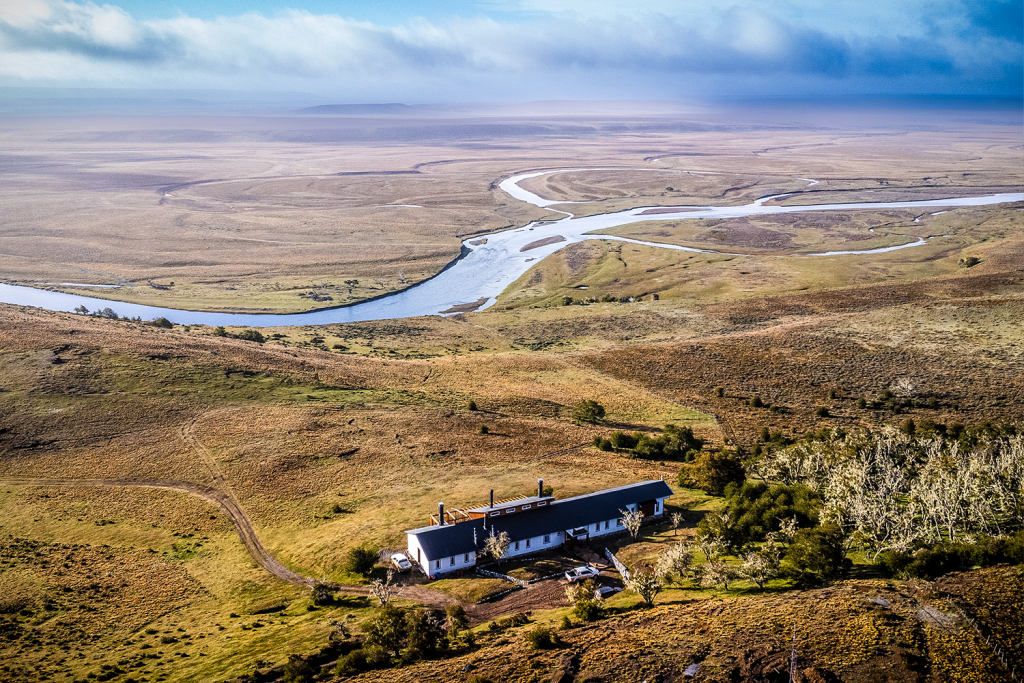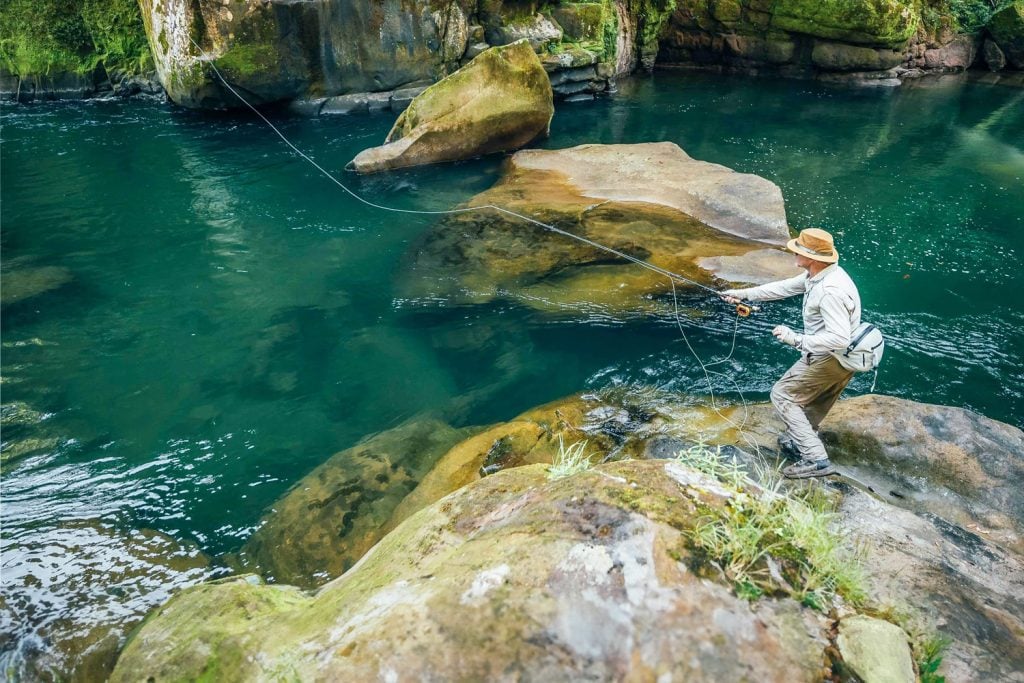With more modern fly lines, more people are using Skagit and Scandi style Spey lines at our destinations in Alaska, Canada and Argentina. These lines incorporate short shooting heads connected to straight running lines, also known as shooting lines. Distance in the cast is achieved by having the heavier part outside the rod tip. The heavier head then carries the cast and pulls out all the available running line on the cast. The management of the running line is vital to be able to achieve good long casts constantly.
There are several ways that an angler can manage their running line when wading in the river. However, like most things Spey fishing, what works for some doesn’t always work for others. Managing your running line helps prevent tangles and allows for easier long casts by minimizing the drag associated with pulling big loops of line out of the water when a cast is made.
As we have been asked about this subject many times, we thought it would be useful to share the knowledge we have picked up from guides/instructors around the world.
Method One – Running Line Finger Loops
One method is to divide the one big long loop of running line that would be dragging in the water into a selection of smaller loops. However, if anyone has ever tried coiling up this long loop into smaller loops, they soon realise it turns in to lots of line tangles and aborted casts. The trick in this method is all about descending size loops. Once you have cast and fished your fly through the water, it’s time to start striping in. Stripline in with your spare hand, and after 6 strips, hook the line around your little finger.
Continue to strip in but this time, when you get to 5 strips, put the running line around your ring finger. If you still have a line to strip in, continue until you either run out of line to strip in or reach 4 strips. Again, put this loop around your next finger. You should now have 3 loops all decreasing in size over three fingers.
Normally this will be enough to manage most long distance casts.
Once you have all the line neatly in loops on your fingers, put your hand back on the bottom of your rod while continuing to hold the loops. Make your normal cast as your running line starts to shoot out, release your fingers, and the running line will fly out.
Method Two – Running Line Loops Not Coils
This method, also known as forward hand/backward hand, is believed to come from old climbers tricks to stop their ropes from getting messed. This is an easy method to do but not the easiest to explain, so here goes –
This method is all about changing your hand direction after each strip. With this method, you strip in equal lengths each time, but in between each coil, you rotate your hand.
You can see if I strip in 3 long strips in the above picture, pinch the line, and then strip in another 3 long strips. Again pinch the line before repeating the process. As you can see, I have coils of the line just wrapped around my hand in the same direction. The problem with this is as I let go of these coils, they are very prone to tangles.
As you can see in the above picture, if I strip in 3 long strips and pinch the line with my hand facing forward. I have made a loop, not a coil.
I then strip in another 3 long strips, but this time before pinching the line, I turn around my hand, facing backwards.
From this picture, you can now see all the line striped in and ready to cast as all the spare running line is now neatly in loops and no coils. When I make the cast and release the line, it naturally unfolds out, making a tangle-free cast.
The best way, like all fishing, is practice. The more time you spend practising either of the above methods at home, the more proficient you will be when standing in the water.
Tight lines,
Peter
Contact us
If you have any more tips or comments, please feel free to share them below! If you have any questions about any of our fly fishing holidays and would like to speak to our fly fishing team leader, Peter Collingsworth, you can contact him on 01604 407596 or via email at peter@sportquestholidays.com. You can also find our fantastic fly fishing adventures over on our Youtube.
